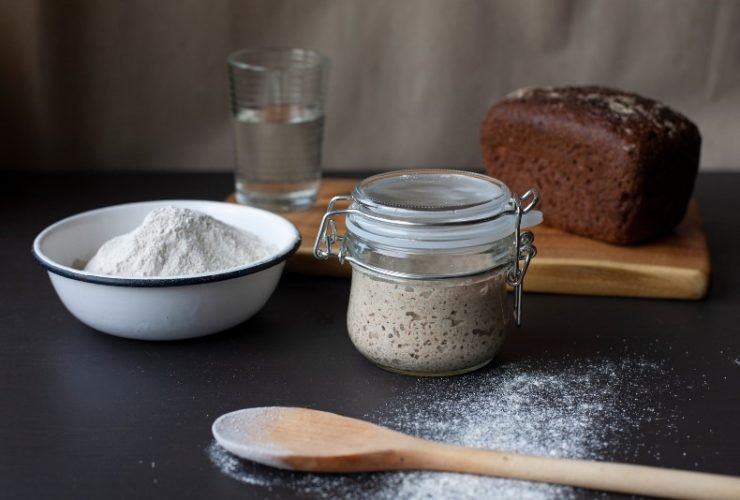The pleasantly sour taste in a good loaf of sourdough is caused by the presence of lactic and acetic acids. Lactic acid brings a smooth and creamy yogurt-like flavor, while acetic acid contributes a sharper, vinegar-like tang.
Some bakers might think that since acetic acid is sharper, it’s the only one that makes sourdough sour. The truth is that these acids work together in sourdough to form a complex and satisfying flavor.
If your loaves aren’t quite hitting the mark in the flavor department, there are endless ways to adjust the levels of these acids in your sourdough. But after years of working as a professional baker, here’s what I’ve found to be the best ways to make your sourdough more sour.
In This Article
How To Increase The Sourness Of Your Sourdough
1. Mature Your Starter Before Using It
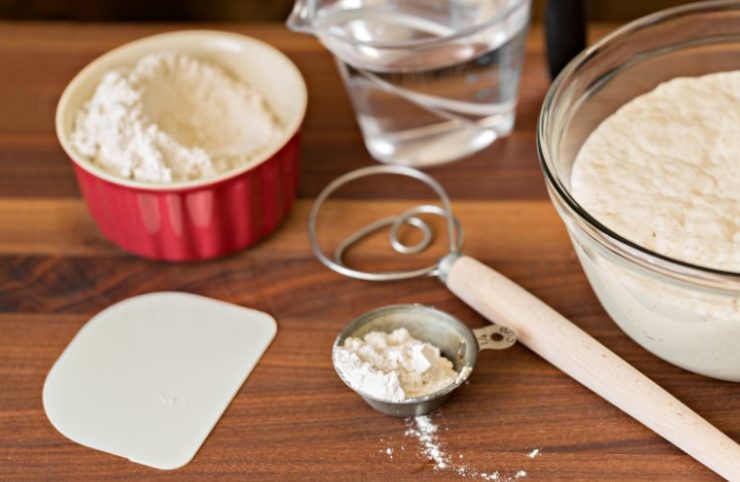
If your starter is relatively new, it may not be mature enough to use in a bread recipe. A ripe starter should double in size within 4-6 hours of feeding it.
Even if you’re making a pre-ferment for your bread (like a biga, poolish, levain, or sponge), the maturity of the starter that you add to it will greatly affect this initial phase of flavor development.
If you’re having trouble getting your young starter to mature and rise consistently, check out this article on How to Strengthen Sourdough Starter. The next option on this list will also help jump-start a lethargic starter culture.
2. Feed Your Starter Whole Grains
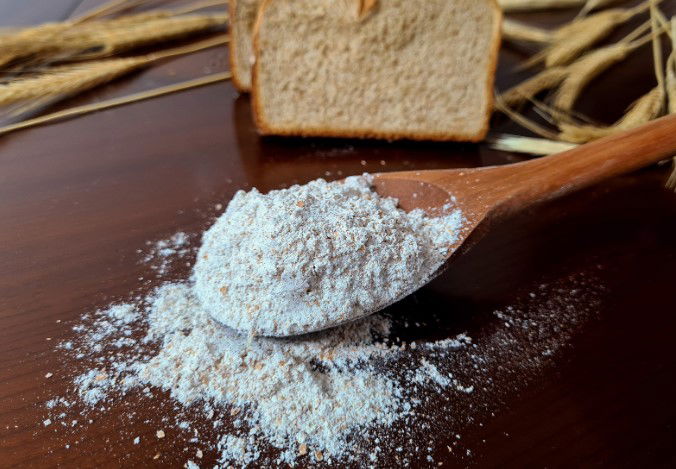
Are you using 100% bleached (white) all-purpose flour or bread flour in your starter? That common issue can lead to less flavor and a less active starter.
Feeding it with 50% whole-grain flour and 50% white can improve the flavor and help a new starter mature faster.
Whole wheat will work but rye flour is the ideal whole-grain choice for the best results. Rye has a unique combination of sugars that encourage acetic acid production. It’s also rich in natural yeasts and bacteria that make your starter ferment quicker and taste better.
3. Feed Your Starter Less Frequently
If you allow your starter to get a little “hungry”, it produces more acetic acid, lending extra tanginess to the starter.
If your starter is already mature, consider feeding it every 1-2 days. This should help develop more sourness in your starter, and will still be enough food to keep it going.

Pro Tip: If your starter develops a brownish, alcohol-scented liquid on top from this feeding schedule, don’t fret. It’s safe! Simply stir the “hooch” back into your starter right before feeding it, and this will help increase its sourness.
4. Increase Fermentation Temperature
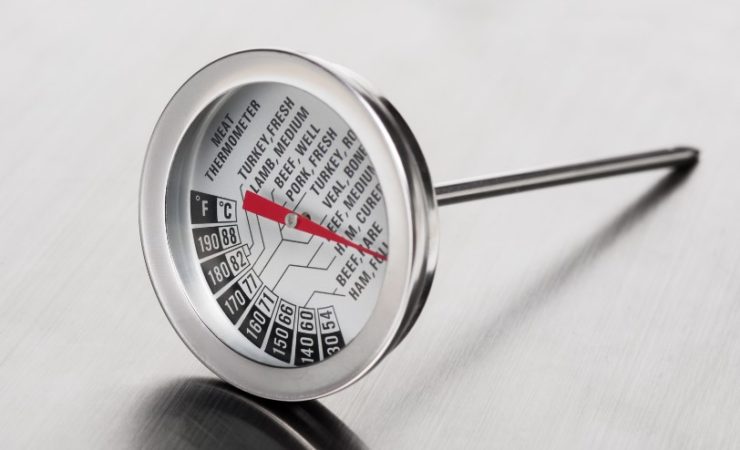
Another way to increase the sour flavors in your starter is by simply increasing the temperature during fermentation. Shoot for 75-82°F to increase the acidic activity in your starter.
5. Increase The Hydration Of Your pre-ferment
A pre-ferment lends yet another opportunity to boost the sour flavor in your bread. This consists of a mixture of flour, water, and a mature sourdough starter.
Aim for as high as 125% hydration in your levain or other pre-ferments. This moisture boost will increase the activity of the bacteria that form lactic and acetic acids. That will infuse extra sour flavor into your pre-ferment and final loaf.
6. Increase The Temperature While The pre-ferment Is Rising
Like increasing the fermentation temperature of your sourdough starter, you can also encourage a little more souring in a pre-ferment by boosting its temperature.
Again, aim for a temperature range of 75-82°F while it’s set aside to rise. Keep in mind that the temperature increase may make it rise faster than you’re used to.

Pro Tip: You can also wait to use your pre-ferment until it’s just past its peak rise. Once it’s barely begun to fall, mix it in with your bread dough and you’ll have some extra sour flavor built in.
7. Use Whole Grains
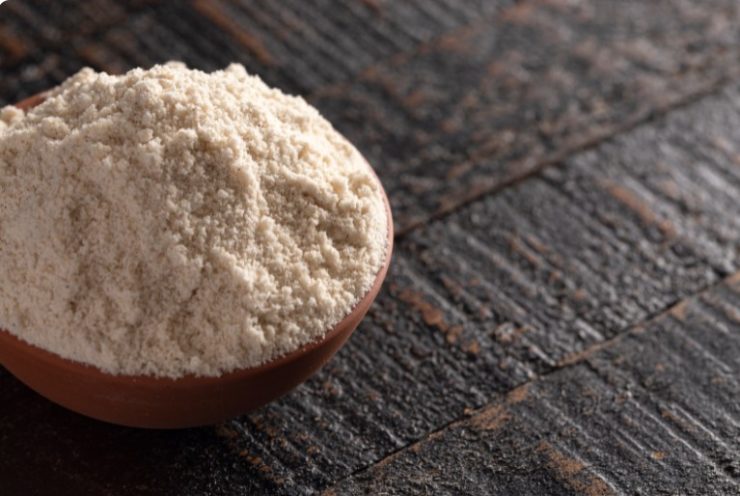
Similar to a sourdough starter, incorporating whole grains (especially rye) in your bread flour mix boosts yeast and bacterial activity. This means more sourness!
For good results without making major changes to the rest of your recipe, aim for 10-15% rye or whole wheat in your flour mixture.
8. Use Warmer Temperatures During The First (Bulk) Fermentation
This is another method that uses an increase in temperature to increase acid production and flavor. During your bread dough’s first (bulk) fermentation, keep it in a warmer environment to help boost its flavor development.
You can push the temperature to as high as 79-83°F. As temperatures increase, fermentation also speeds up. So as you use this technique, be mindful not to overproof your dough.
9. Refrigerate Your Dough During Its Second Fermentation
As you may have noticed, temperature plays a big role in acid production and the sourness of your bread. And while it’s usually an increase in temperature that leads to more flavor, this method utilizes cooler temperatures to build more sourness.
After you’ve shaped your bread and it’s time for its final proof, refrigerating it during the last rise can enhance its sour flavor.
By doing this, the cooler temperatures bring out more lactic acid flavors. These flavors are creamier, but also tangy like yogurt and pleasantly complex. And just like warm temperatures speed up fermentation, colder temperatures slow it down. So you may need a longer final proof.
10. Keep The Recipe Basic
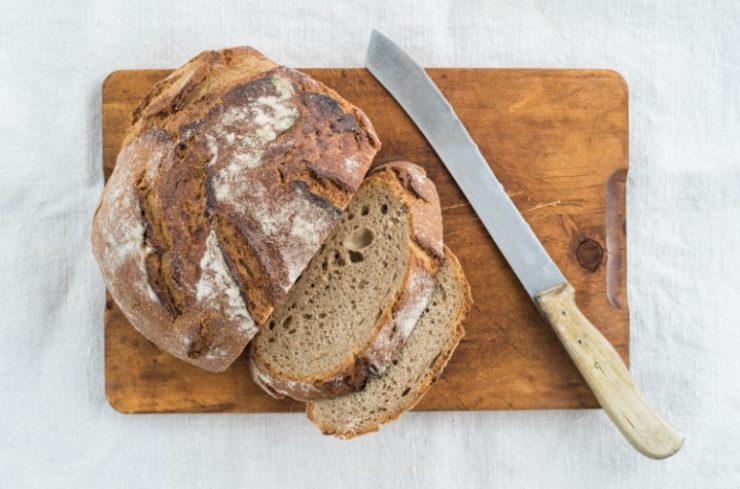
For an extra sour sourdough bread, keep it simple. For maximum flavor, a classic sourdough loaf should only contain flour, water, and salt.
Adding rich ingredients like oils, butter, or milk will mellow the flavor of your starter, squashing all the hard work you did to enhance its zing.
Final Considerations
Because there are so many factors at play together, any one of these actions by itself may not guarantee a more sour loaf. Ambient (room) temperature, water temperature, and the ripeness of your starter are a few variables that can affect the flavor of your bread.
The ultimate goal is to find a harmonious balance between all these factors as you experiment with creating the taste you want.
Be mindful as you tinker with increasing temperatures and hydration for stronger sourness, as they can lead to more rapid fermentation. See how far you can push it without over-proofing your dough.
Finally, tracking your progress in a baking journal is a great way to help you learn what’s working and what isn’t. Even if you use the same steps every time, your loaves will probably still come out slightly different. That’s just the exciting nature of working with living sourdough.
Frequently Asked Questions
What causes the sour taste in sourdough?
The sour taste in sourdough primarily comes from lactic acid and acetic acid produced during the fermentation process of your starter and bread dough.
Why does my sourdough bread taste bland?
This depends on temperatures during fermentation, the type of flour you use, and your length of fermentation. Cooler temperatures and conservative fermentation times can lead to a milder taste.
What’s the best way to make an extra-sour sourdough starter?
For a more sour starter, increase the temperature while it’s rising, between 72-82°F. This will speed up fermentation and increase the levels of lactic and acetic acid.
